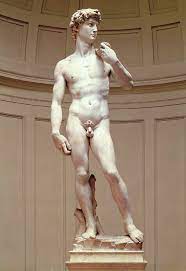Representing an attempt to interpret objective reality through the prism of one’s senses, perception, culture, and philosophy, art has always been a crucial emotional outlet for people across the globe. While the subjects of artistic endeavors have been quite numerous, the attempts at depicting the human body as a means of reflecting on one’s existence and the perception of the self have been among the prevalent artistic ideas. Reflecting changes in aesthetic ideas, philosophy, and social values, the portrayal of the human body in art is one of the crucial ways of showing what philosophy dominates the social discourse.
To examine the specified phenomenon, one might want to consider “David” by Michelangelo di Lodovico Buonarroti Simoni, typically referred to simply as Michelangelo. Portraying both unwavering courage and physical perfection, “David” represents the quintessence of the Renaissance idea of the impeccable human being. Remarkably, despite the restrictions that the genre of sculpture sets for the extent of emotional expressivity, “David” manages to capture a wide range of emotional nuances, from the representation of perseverance as one of the fundamental qualities lauded during the Renaissance to the notions of purity and grace.
The specified artwork resonates with me particularly strongly since the limitations of sculpture as an art form are taken advantage of in the specified art piece. Namely, the absence of the background and the use of the third dimension are utilized masterfully to create a powerful expression of force, beauty, and grace. Carrying an essential meaning as the portrayal of one of the key Biblical characters, “David” evokes the feelings of triumph and aesthetic delight, which is the main rationale for choosing the specified artwork as the subject of the discussion. Michelangelo used “David” as a commentary on the traditional Biblical narrative, and his successful attempt at immortalizing the legendary Biblical hero was undeniably successful.

Reference
di Lodovico Buonarroti Simoni, Michelangelo. (1501-1504). David [Sculpture]. The Museums of Florence, Florence, Italy.